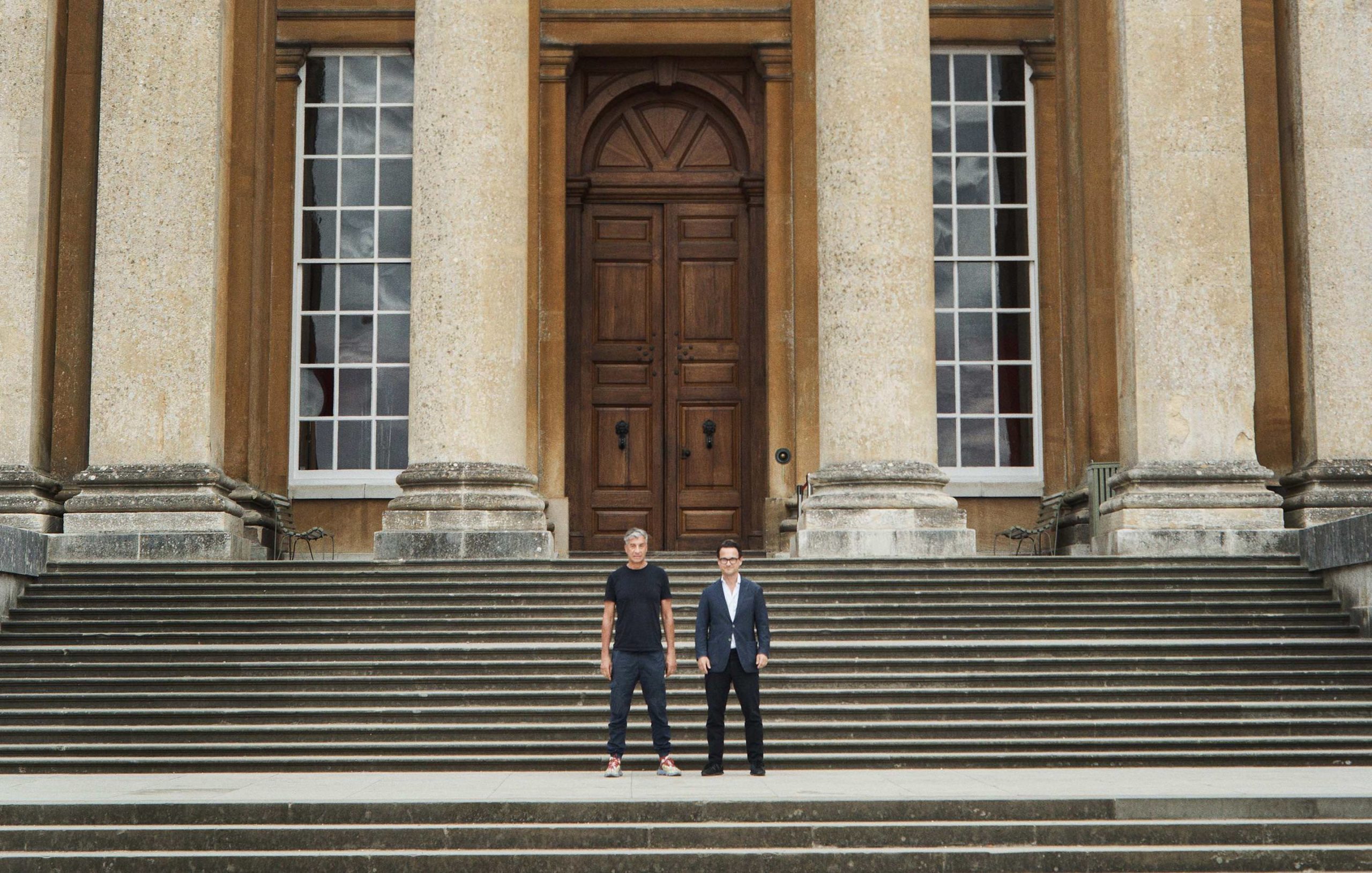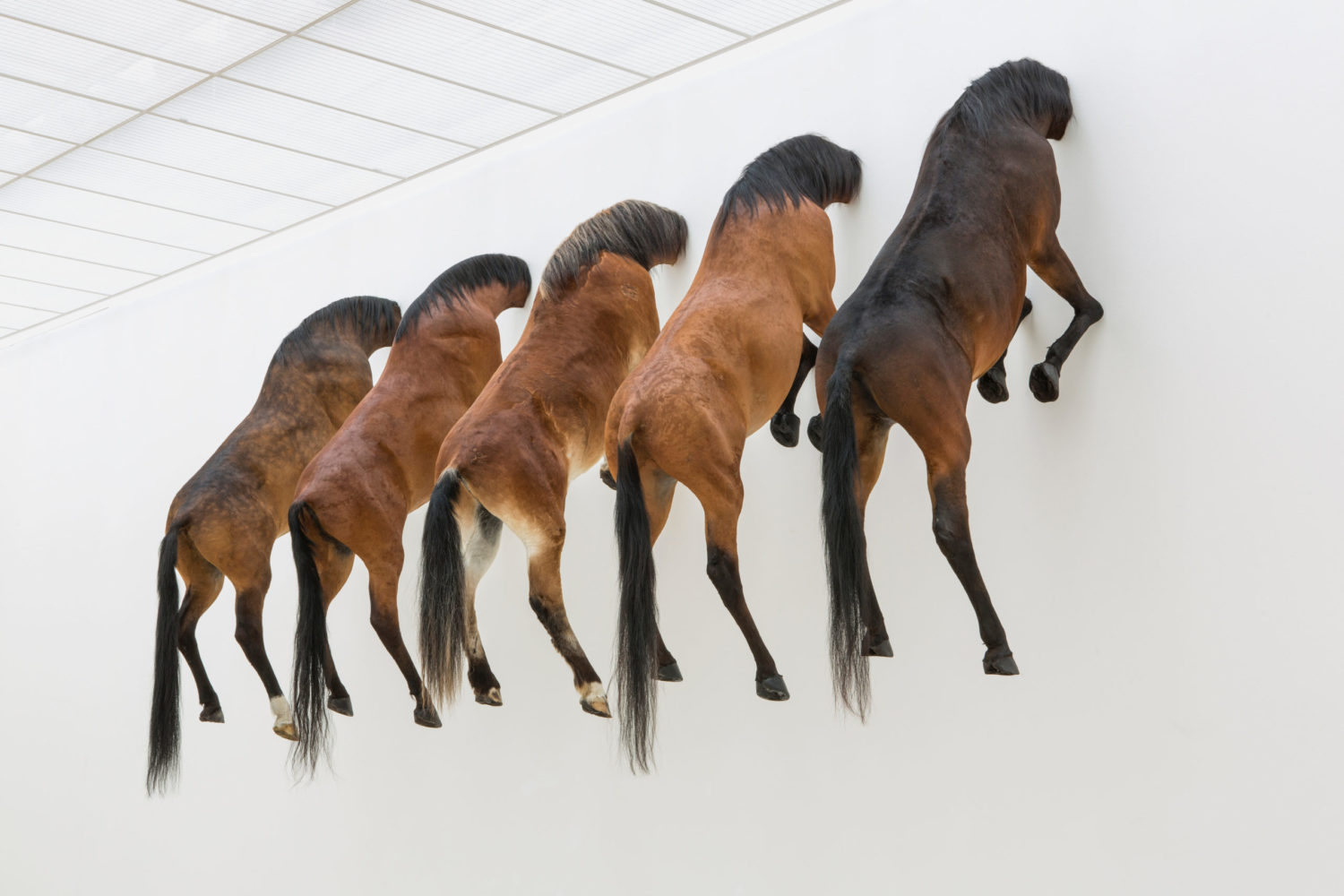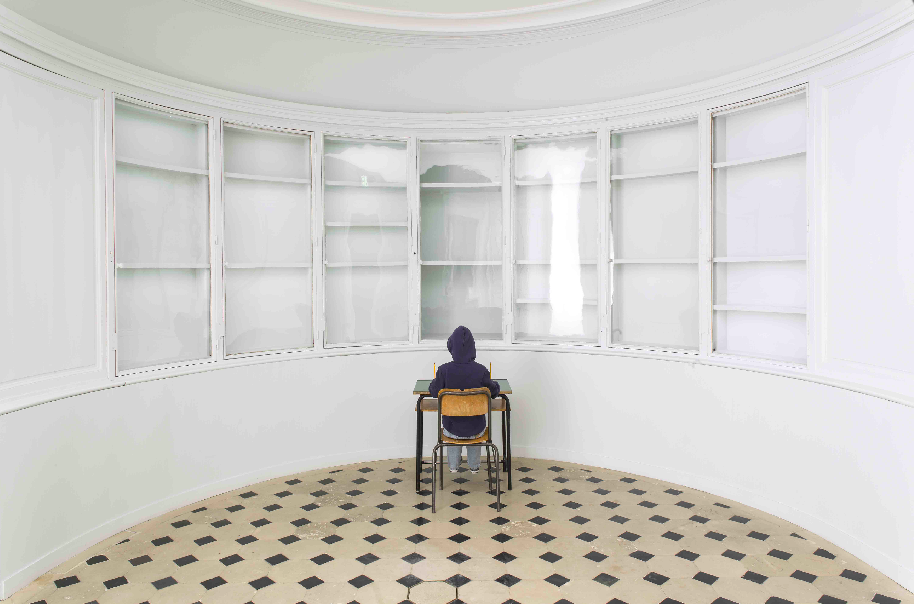Maurizio Cattelan’s “Victory is Not an Option” opened last month in Oxfordshire’s Blenheim Palace in the UK. His most significant presentation in Britain in two decades, the show features some of the Italian artist’s most influential works, presented throughout the opulent stays of the estate to create a narrative on themes of national identity, power, and personality.
The show begins at Blenheim’s entrance, where an enormous site-specific pathway of Union Jack flags ushers visitors towards its doors. Once inside, Cattelan’s singular wit and satirical style evokes thoughts on systems of authority, asking viewers to ponder the emotions brought on by national symbols—including works like a sculpture of a kneeling Hitler and a gargantuan taxidermized horse suspended from the ceiling, named Novecento.
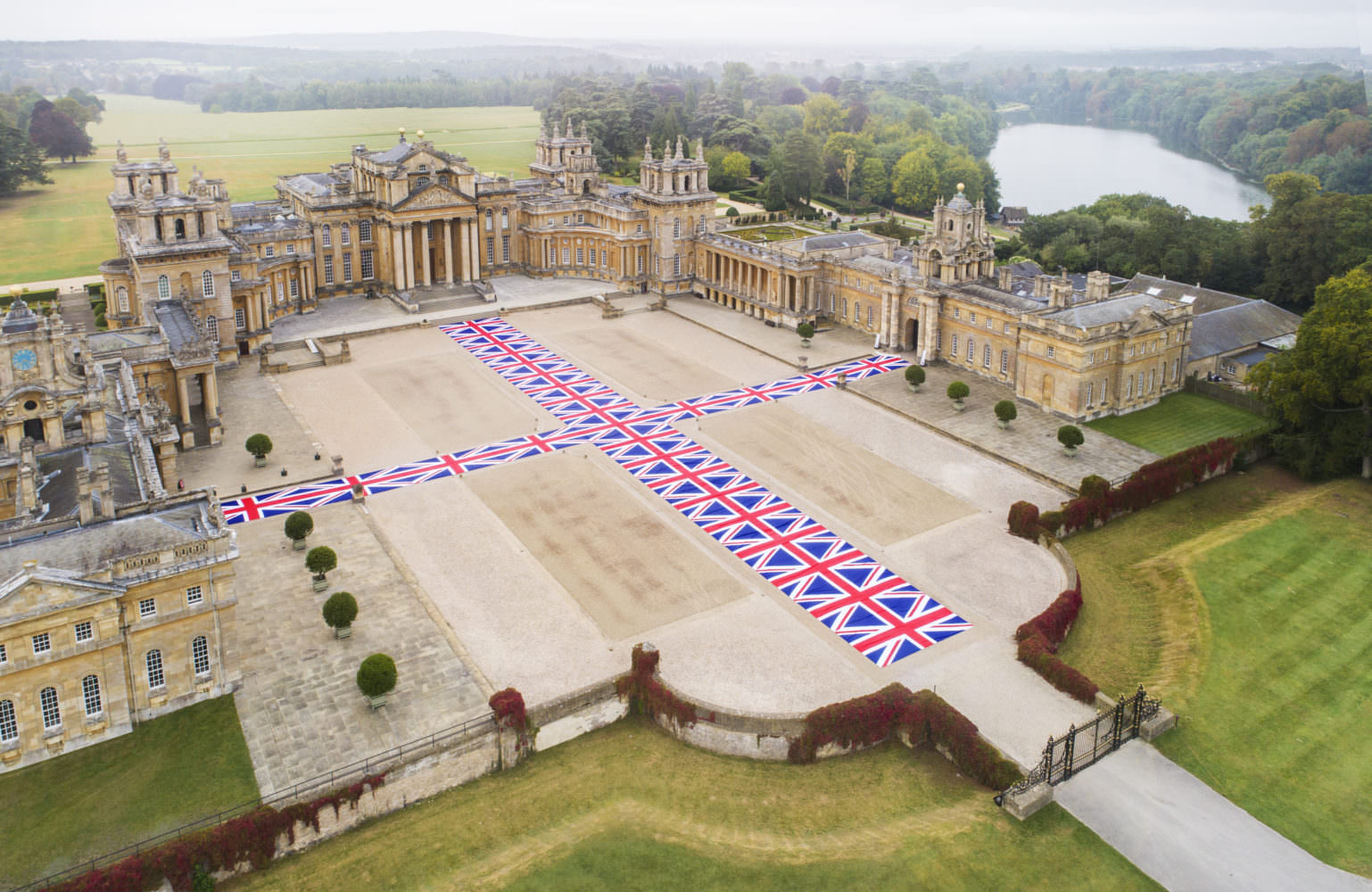
Maurizio Cattelan
Victory is Not an Option
2019
Installation view from “Victory is Not an Option” at Blenheim Palace, 2019
Photo by Tom Lindboe
Courtesy of Blenheim Art Foundation.
Upon its opening, the exhibition also featured a solid gold, fully functioning lavatory entitled America, that Cattelan created to point out the historic constructs of status and influence underlying institutions like Blenheim Palace, while highlighting the basic needs of all humans—regardless of economic or social standing. However, the work was stolen from the palace premise and has yet to be recovered.
Placed throughout the baroque interiors of the palace, other works on view move on to examine the cult of personality—like a series of cheeky self-portraits, juxtaposing the stately, official portraits of the palace’s collection. Outdoors, viewers can experience large-scale works like Daddy, Daddy and a walk-in replica of the Sistine Chapel.
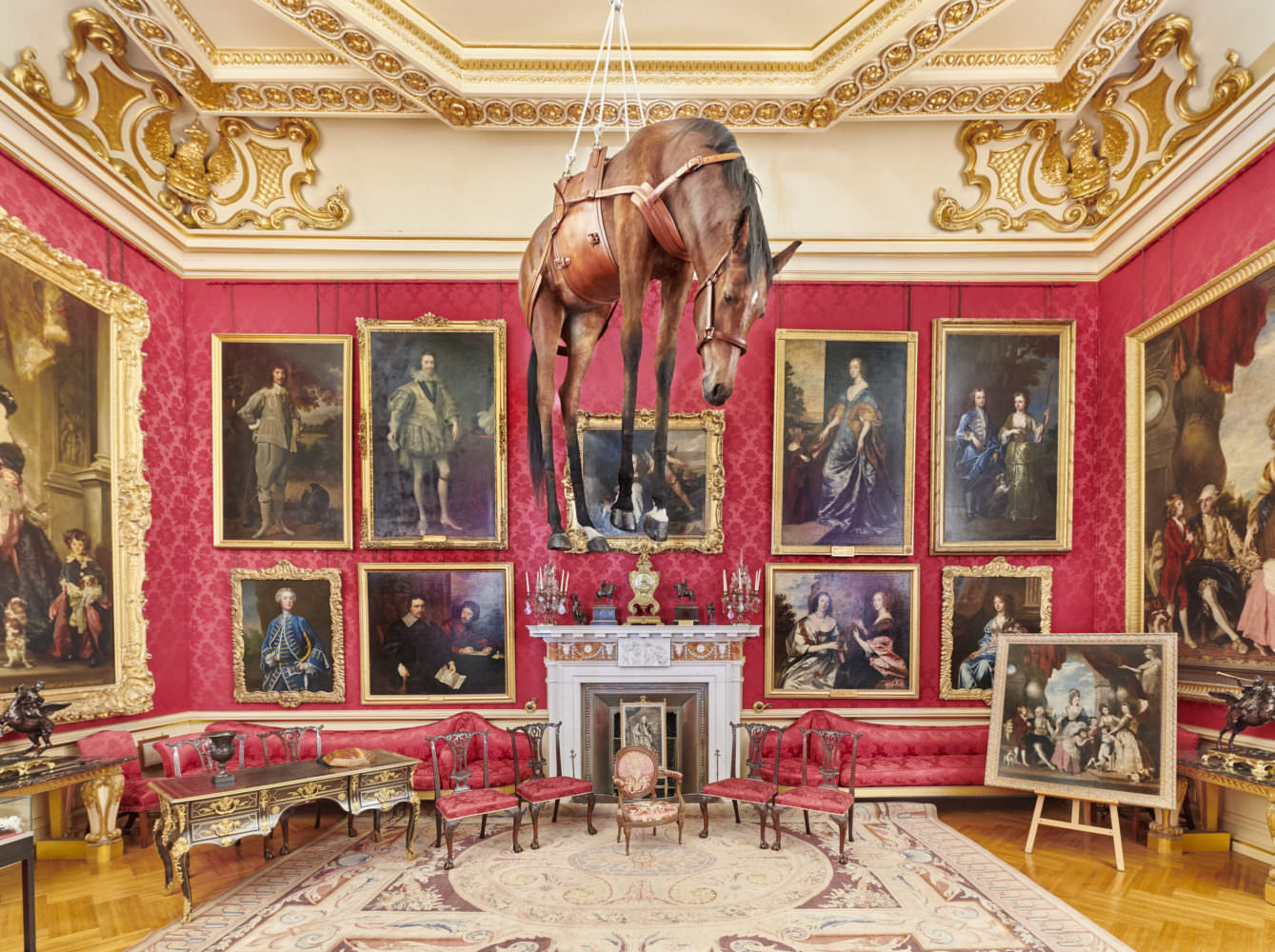
Maurizio Cattelan
Novecento
2019
Installation view from “Victory is Not an Option” at Blenheim Palace, 2019
Photo by Tom Lindboe
Courtesy of Blenheim Art Foundation.
Whitewall caught up with Director of the Blenheim Art Foundation Michael Frahm to learn more about the show.
WHITEWALL: What was the starting point for “Victory is Not an Option”?
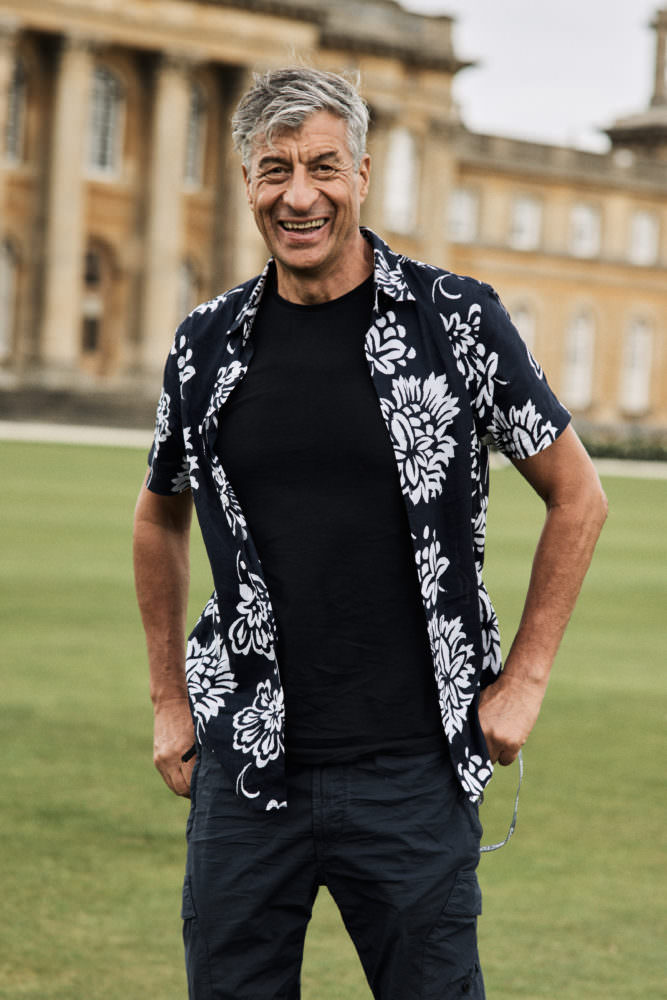
Maurizio Cattelan at Blenheim Palace
Photo by Edd Horder
MICHAEL FRAHM: I have admired Maurizio’s work for a long time and wanted to introduce his practice to British audiences. He had not had a solo exhibition in the UK in twenty years which seemed extraordinary to me. When the opportunity arose and we had our first conversation, it quickly became very clear that it was the right time for this exhibition to happen.
WW: Tell us the story behind the title of the show?
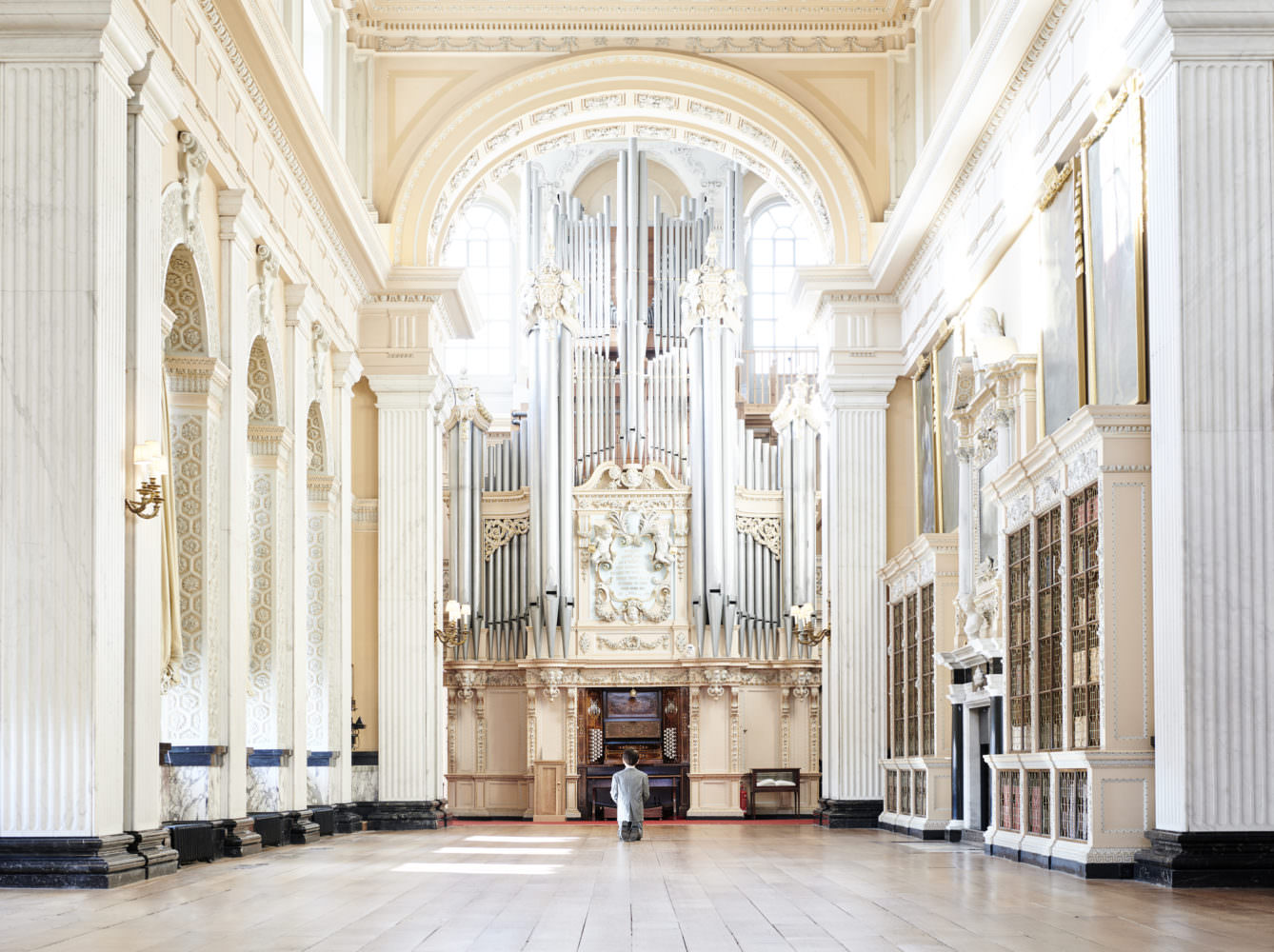
Maurizio Cattelan
Him
2001
Installation view from “Victory is Not an Option” at Blenheim Palace, 2019
Photo by Tom Lindboe
Courtesy of Blenheim Art Foundation.
MF: The exhibition engages with Blenheim Palace’s martial history and political history, with the new and old works coming together to tell stories of war, power and national memory. The title “Victory is Not an Option” touches on these ideas and is very ambiguous which Maurizio liked. It becomes like a slogan.
WW: Can you tell us about the new works on view Cattelan created specifically for this show?
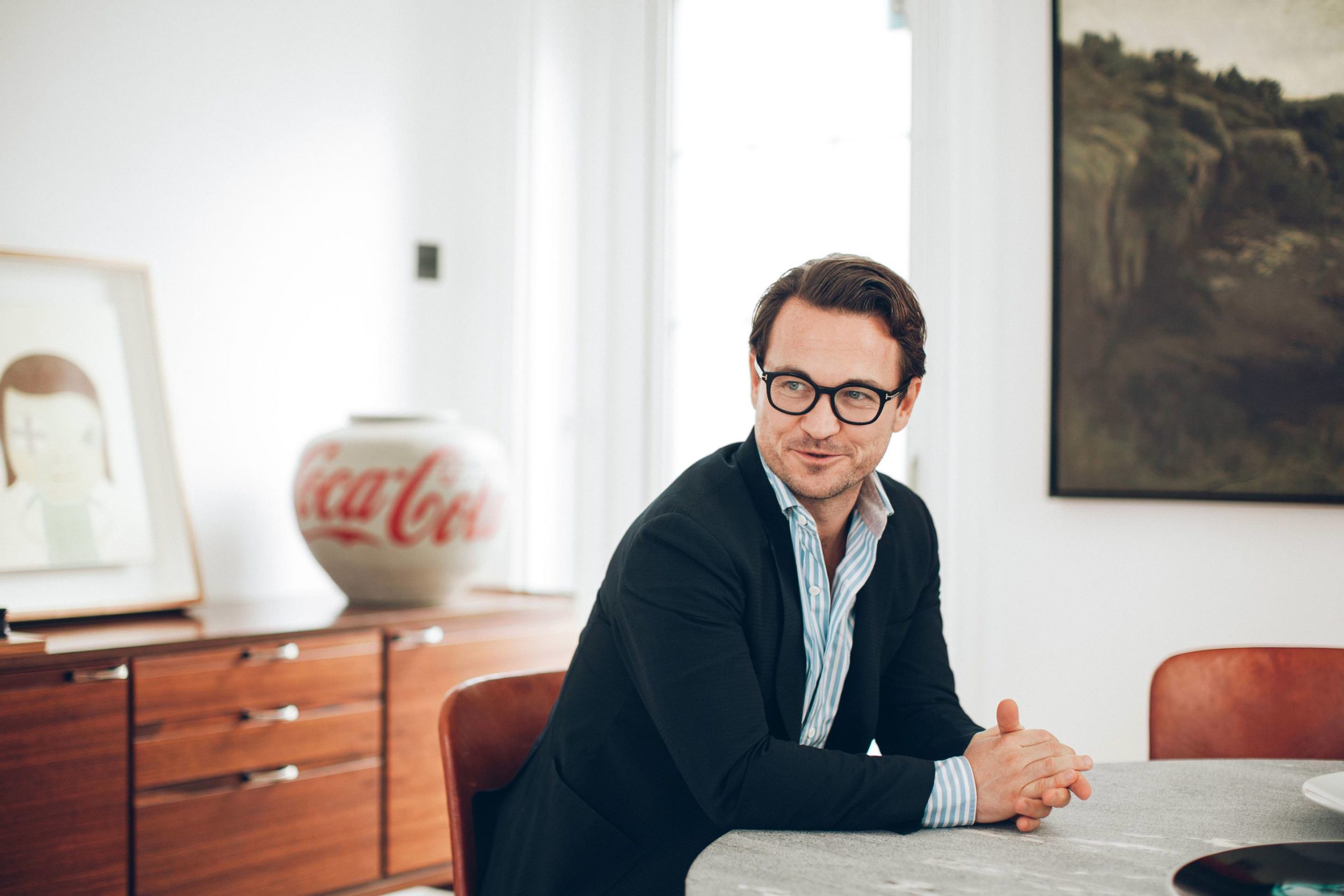
Michael Frahm
Photo by Susheel Schroeder
MF: Maurizio created seven new artworks for his show at Blenheim Palace, which is significant considering the selective body of work he has produced over his thirty-year career span. There is the site-specific flag installation “Victory is Not An Option” outside in the Great Court which is a walkway of Union Jack flags, We’ll Never Die, a monumental copy of the arm of Joan of Arc from a sculpture in Paris, as well as Glory Glory Hallelujah, three horse skulls wearing gold armour mounted on the wall. All of these touch on the themes of battle and national memory which are integral to Blenheim Palace’s history. Visually they are also incredibly striking at the Palace.
The exhibition also presents a new taxidermy work, Ego, which is a crocodile suspended in the Third State Room. Maurizio is known for his taxidermy works which have been a staple of his practice since the 1990s. The crocodile is displayed as a counterpart to the taxidermy horse Novecento. They image good and evil in a sense. The world’s oldest piece of taxidermy is in fact also a suspended crocodile, which can be found in a church in Ponte Nossa in Italy. Scholars believe that crocodiles were used to represent the defeated dragon in the tale of St George.
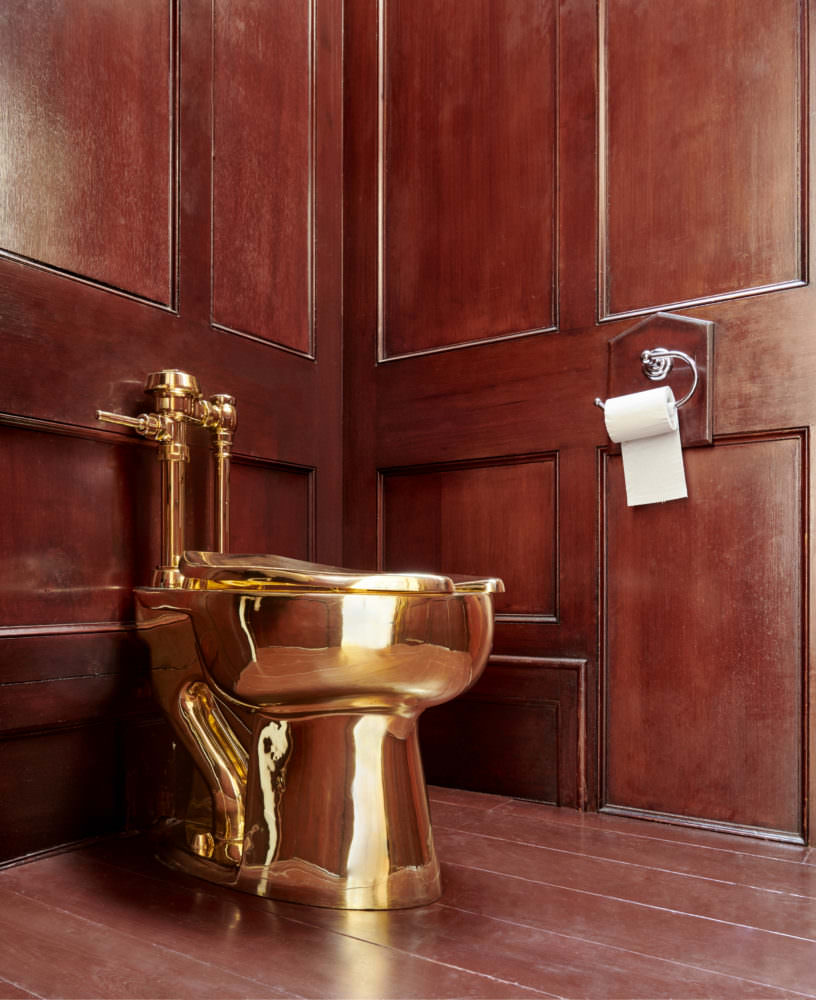
Maurizio Cattelan
America
2016
Installation view from “Victory is Not an Option” at Blenheim Palace, 2019
Photo by Tom Lindboe
Courtesy of Blenheim Art Foundation.
Maurizio also made a number of new versions of existing works for this show, such as Oliver, a new homeless man sculpture who sleeps in the Chapel, and Untitled, a gold version of his 2009 work Untitled which showed his profile smothered in a black rubber boot. He also made a monumental version of Daddy, Daddy, first shown at the Guggenheim, to float outdoors in the Palace fountain.
WW: The new works are shown alongside some of his most iconic sculptures. What is the earliest piece on view?
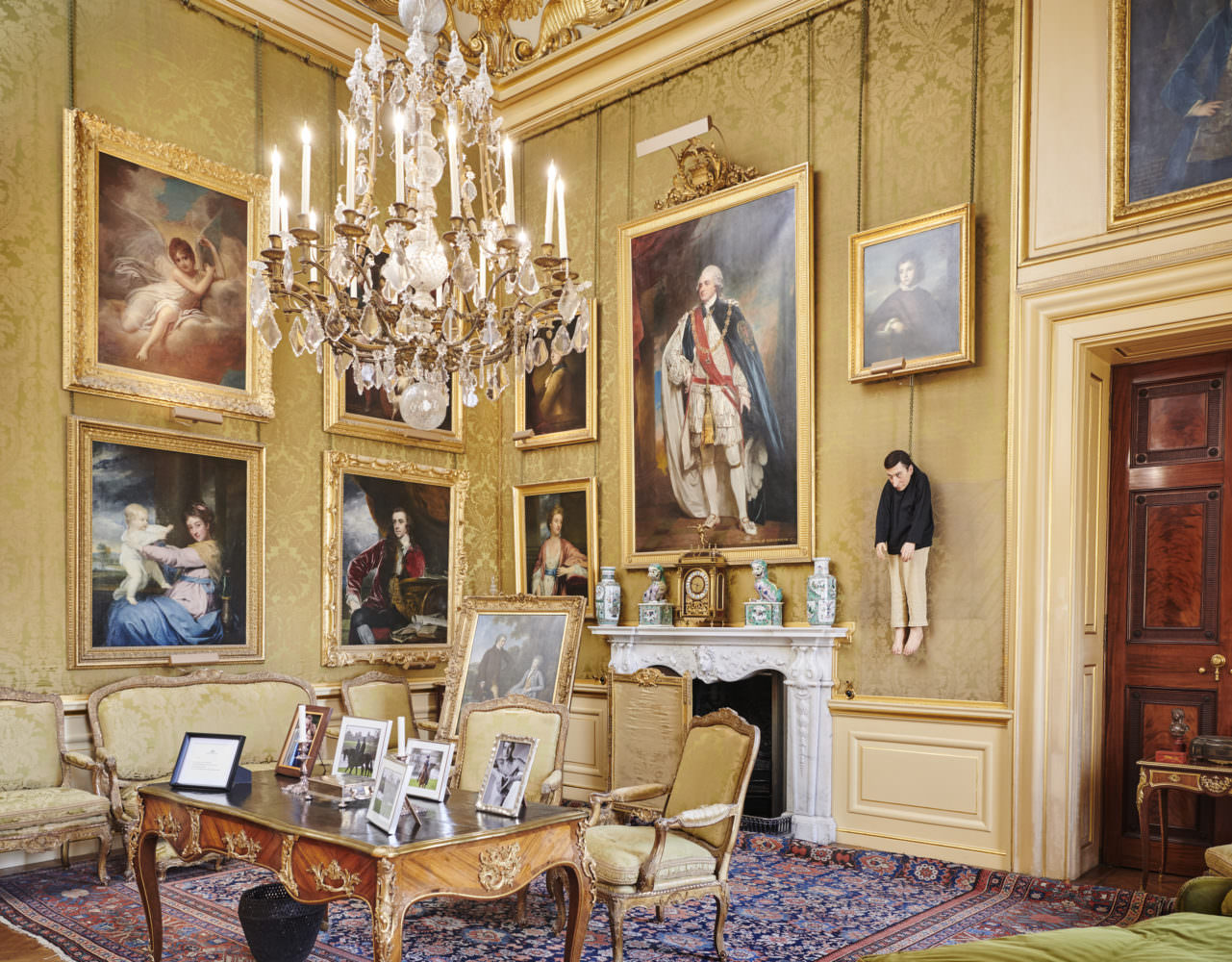
Maurizio Cattelan
Untitled
2000
Installation view from “Victory is Not an Option” at Blenheim Palace, 2019
Photo by Tom Lindboe
Courtesy of Blenheim Art Foundation.
MF: The earliest piece is Lessico Familiare from 1989. It is a framed photograph of Maurizio and is generally considered his first artwork. It is shown in the Green Drawing room which is full of the portraits of successive Dukes and Duchesses of Marlborough who have resided at Blenheim Palace. Maurizio cheekily inserts himself into the family lineage and history, you could say.
WW: How did you envision Cattelan’s work in dialogue with the unique location of an 18th century palace?
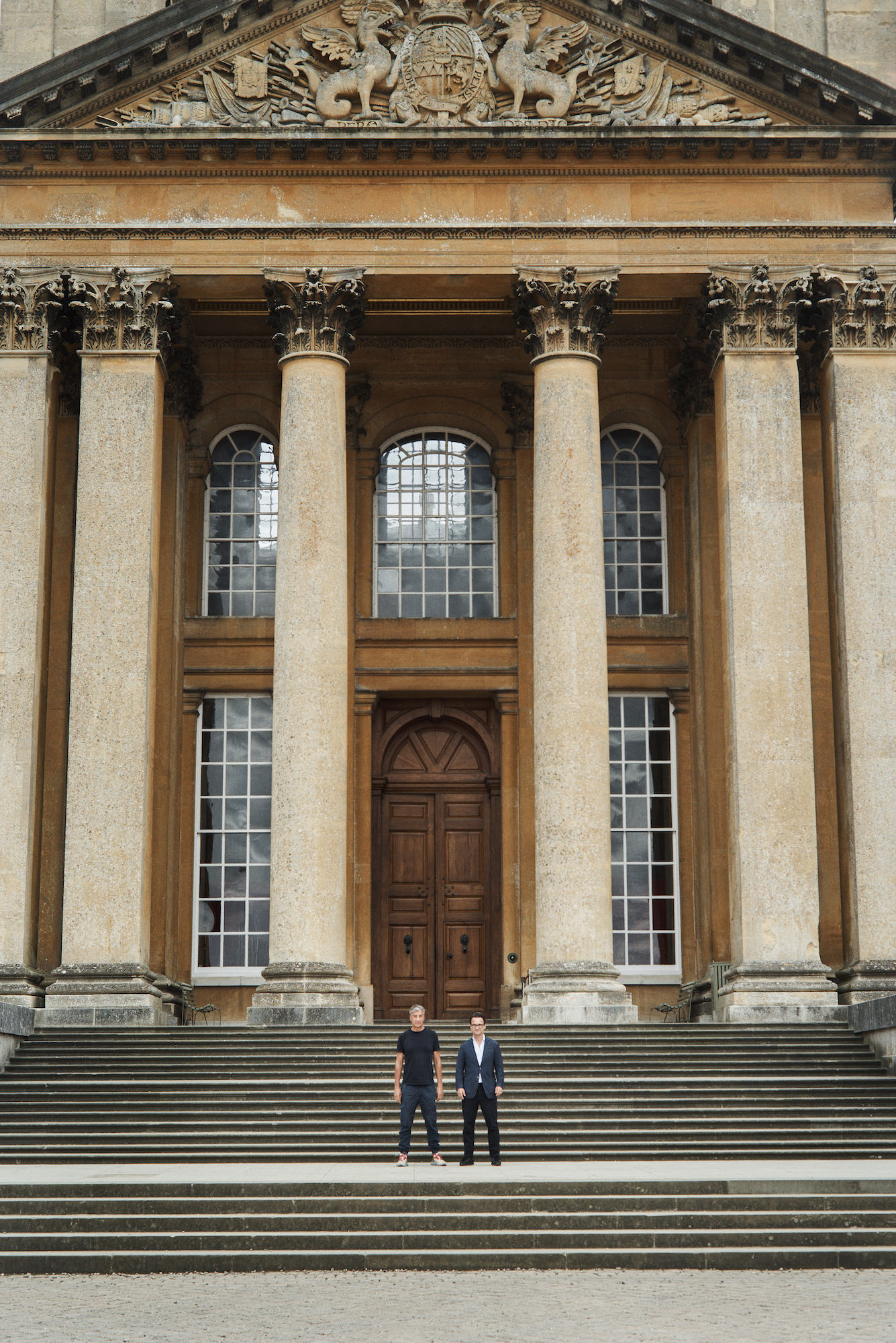
Maurizio Cattelan and Michael Frahm at Blenheim Palace
Photo by Edd Horder
MF: Maurizio’s work holds up a mirror to society and makes us question what we know. He uses motifs and characters from history and pop culture to start conversations about the world we live in. Blenheim Palace is a place full of history and is a microcosm of a certain society and hierarchy. So the pairing is inevitably fascinating and mutually enriching I think.
It is not usual for Maurizio to do a themed exhibition but, on this occasion, there is a real dialogue between his work and the history of the Palace, and you can see a distinct thematic red thread running through the show. This exhibition really tells a story.
WW: The work America was very unfortunately stolen from the show over the weekend. What was the reaction of the artist?
MF: Ironically, I think he thought it was a prank at first.
WW: This is the sixth exhibition at Blenheim Palace. Aside from the current show, what have been some of the more memorable ways artists have engaged with the historical site?
MF: We have been fortunate to host incredible artists with very varied practices and different ways of engaging with the Palace’s site and history. Ai Weiwei, Lawrence Weiner, Michelangelo Pistoletto, Jenny Holzer, Yves Klein and Maurizio Cattelan have all contributed very different exhibitions to the program. There are many pieces that stand out to me from each year, but perhaps one to highlight would be Jenny Holzer’s light projection display on the facade of the Palace in 2017. The piece was a huge undertaking, her most ambitious light projection display to date with ten projectors. The final result—the words of war veterans, victims, and survivors gliding silently over the Great Court as night fell—was incredibly stunning and moving. I am glad we got to share that with the visitors, and we were further honored to receive the Global Fine Art Award for “Best Public Art Exhibition” for that show.


